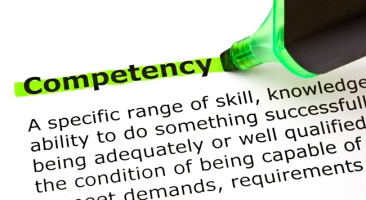 When I graduated college 16 years ago, times were different. I had a job before graduation and I never questioned the value of my degree. While I had an internship, the focus then on skills (vs. education) wasn’t nearly as strong. Today, students need internships before entering the workforce.
When I graduated college 16 years ago, times were different. I had a job before graduation and I never questioned the value of my degree. While I had an internship, the focus then on skills (vs. education) wasn’t nearly as strong. Today, students need internships before entering the workforce.
And then comes the price tag. My son is a freshman this year and soon, we’ll be looking at colleges. As some of you may know, I work at a university (in addition to my Event Garde role), so I live and breathe higher education. Yes, it’s expensive. And yes, it’s worth it.
But when I see students struggling to make ends meet and their parents sacrificing to pay tuition, it’s a scary thought: What will happen?
We’re facing a student debt crisis. Recent college graduates are saddled with thousands of dollars in debt and many can’t find a job, let alone start a career. So what should we do?
The answer may lay in associations, according to Elizabeth Weaver Engel, chief strategist for Spark Consulting, and Shelly Alcorn, principal for Alcorn Associates Management Consulting, who just released, “The Association Role in the New Education Paradigm.”
Educators should develop a better understanding of what students need to be learning, and then connect those learning outcomes to employment, they said. According to their research, students and employers agree on the skills necessary to succeed in the workplace: critical thinking, problem solving, oral and written communications, teamwork, ethical conduct, decision-making and the ability to apply knowledge.
However, there’s a huge divide in the readiness of such skills. Many employers report not finding such skills in recent college graduates because earning a degree doesn’t necessarily teach them.
But with credentialing programs, MOOCs, conferences and other online offerings, associations can fill the skills gap.
“With an education system that is being disrupted, college students graduating with degrees that fail to provide them practical job skills and more adult and nontraditional learners than ever, associations stand at a crossroads,” Engel and Alcorn wrote. “There are enormous needs we can meet: creating high-quality, competency based education; fostering social learning; and providing clear pathways to employment for students, the long-term unemployed, returning veterans or those individuals who are about to see their jobs significantly affected by the rise of automation and artificial intelligence. It’s a big opportunity and a big challenge.”
 One example: competency-based education. Students drive their own pace of completion through a program’s curricular courses or modules by demonstrating competencies through learning exercises, activities and engaging experiences. CBE creates opportunities for digital badges, certification and micro-credentials to visually demonstrate ongoing growth and professional development for adult learners who seek career opportunities and advancement without waiting for completion of a terminal degree as the only signal of qualifications for employment.
One example: competency-based education. Students drive their own pace of completion through a program’s curricular courses or modules by demonstrating competencies through learning exercises, activities and engaging experiences. CBE creates opportunities for digital badges, certification and micro-credentials to visually demonstrate ongoing growth and professional development for adult learners who seek career opportunities and advancement without waiting for completion of a terminal degree as the only signal of qualifications for employment.
“CBE offers the flexibility that could bridge the job-skills gap between employers and those who seek employment in professions that are rapidly evolving,” said Tracy Petrillo, chief learning officer for EDUCAUSE. “Because the learning can occur in varied settings and forms, individuals are not restricted by course schedules and access to programs. New business models are emerging, focused on making CBE programs affordable and on filling needs that are not currently well served through traditional post-secondary models.”
In addition, associations represent every industry and therefore can offer college graduates a pipeline to employers. Associations provide niche education – via credentialing and certification – something most grads won’t have entering the market.
But associations should move quickly, while the landscape is changing, Engel said.
“We have a rapidly closing window of opportunity here,” she said. “For-profits and venture capitalists see a $1.23 trillion market (the current level of student debt in the U.S.) and they aren’t going to sleep on that opportunity forever. (Indeed, the whitepaper covers some of the early moves companies are making into “our” space.) We have other advantages they’ll have a hard time duplicating, but we shouldn’t use that as an excuse to waste our first-mover edge.”
The whitepaper offers seven keys to the shift in thinking, which I encourage you to read in detail (page 28) and offers suggestions for conducting workplace analysis (pages 28-29).
At the same time, Engel and Alcorn offer some tips for associations to take the next step in the educational spectrum:
- Clearly define educational competencies needed, including soft skills
- Clearly define career pathways
- Consider alternative delivery methods and new technologies
- Offer micro-credentialing and badging
- Offer blended learning environments
- Professionalize content development and delivery
- Provide quality certification programs
- Create effective alliances
“The education-to-employment system is broken and we need to understand why and what we can do to help,” Alcorn said. “There is a symbiotic relationship between education (acquisition of knowledge and skills), employment (economically rewarded activity) and living a ‘good life’ (an ethical, spiritually rewarding existence as individuals and as a collective). After all of the research we have done, we believe the current system may have been sufficient for the 19th and 20th centuries, but not the 21st. We can do better.”
Finally, some advice for millennials reading this:
 “You have personal power and more options than you have ever had. You are just at the beginning of an exciting and accelerating lifelong learning process. Focus on developing competencies required by a new employment sphere. Mix and match educational opportunities. Maybe a formal degree will give you the competencies you desire, maybe not. Maybe a certification can get you working while you pursue other educational avenues. Try MOOCs or coding camps. Try it all. The most important thing is to find and maintain a balance between education broad-based enough to help you build the trans disciplinary muscle you need to understand the interplay between systems, and education designed to help you develop a deep expertise in an area you find compelling or personally rewarding.”
“You have personal power and more options than you have ever had. You are just at the beginning of an exciting and accelerating lifelong learning process. Focus on developing competencies required by a new employment sphere. Mix and match educational opportunities. Maybe a formal degree will give you the competencies you desire, maybe not. Maybe a certification can get you working while you pursue other educational avenues. Try MOOCs or coding camps. Try it all. The most important thing is to find and maintain a balance between education broad-based enough to help you build the trans disciplinary muscle you need to understand the interplay between systems, and education designed to help you develop a deep expertise in an area you find compelling or personally rewarding.”
– Shelly Alcorn
“Don’t discount the value of higher education, but also realize that it’s not job training (and it’s not designed to be), and it’s not necessarily the only way in to your desired career field. Consider all your options, including the education and professional development associations can provide. And if the association in your desired career field isn’t meeting your career and professional development needs, don’t walk away – kick a fuss! Get involved! Agitate for change!
– Elizabeth Weaver Engel


